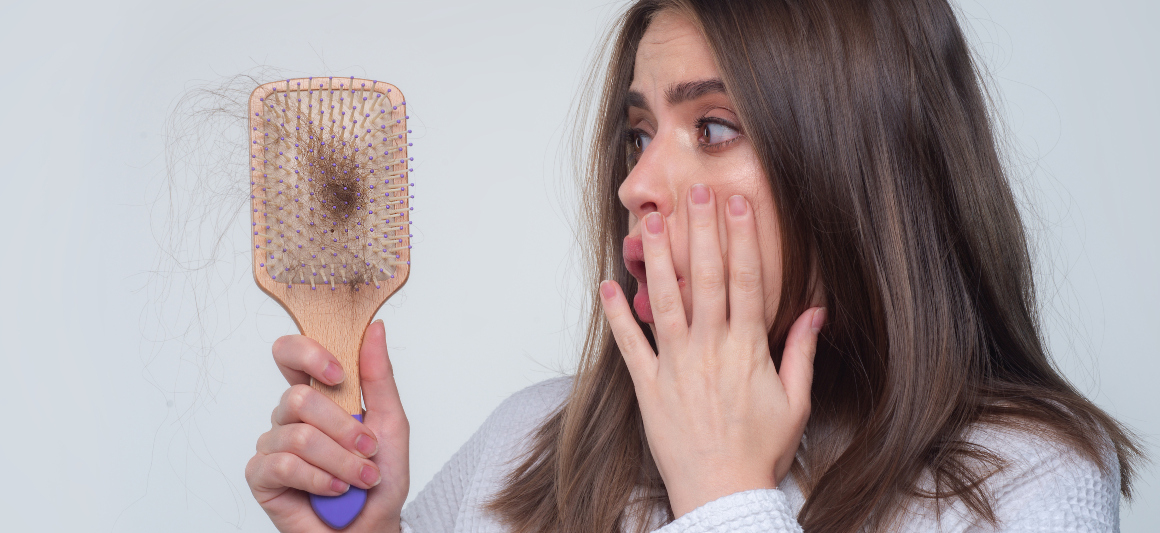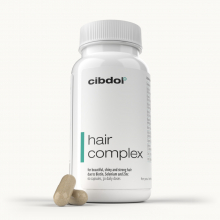What does damaged hair look like? - Signs that your hair may be unhealthy
Published:
Healthy hair looks smooth, shiny, and strong. But over time with improper care, heat styling, and chemical treatments, hair can start to show signs of damage. Knowing what unhealthy hair looks like is key to reversing the effects and restoring your locks to their healthiest, shiniest state.
Contents:
- What are Some Common Signs Your Hair is Damaged?
- What Causes Hair Damage?
- How to Repair Damaged Hair
- Key Takeaways: Signs Your Hair is Damaged
- What does damaged hair look like?
- How can I tell if my hair is unhealthy?
- What are split ends?
- How does hair loss relate to damaged hair?
- Does hair type affect the health of your hair?
- How can I keep my hair healthy?
- What are some common signs of damaged hair?
- Is it normal for hair to shed?
- How can I repair damaged hair?
- What can I do about dull hair?
In this article, we’ll go over the common signs that indicate your hair is damaged and needs some extra TLC. Read on to learn what damaged hair looks like, why it happens, and how to nurse your strands back to optimum health.

What are Some Common Signs Your Hair is Damaged?
Here are 10 of the most telling signs that your hair is unhealthy and damaged:
1. Split Ends
Split ends are one of the most obvious indicators of damaged hair. This happens when the protective outer cuticle layer of the hair shaft becomes compromised, causing the inner fibers to separate and split apart.
2. Increased Breakage and Shedding
If you're noticing more hair than normal falling out when you brush or wash your hair, this excessive shedding is a red flag. Healthy hair only sheds about 50-100 strands per day. Anything more indicates breakage.
3. Frizz and Flyaways
When the hair cuticle becomes raised and rough, hair strands have a harder time lying flat and tend to stick up. The result is increased frizziness and flyaway hair.
4. Lackluster, Dull Hair
Healthy hair has a natural shine. But damaged, dry hair lacks luster and looks dull.
5. Dry, Porous Hair Texture
Dry, porous hair feels rough and straw-like to the touch. Healthy hair is smooth with each strand feeling relatively round.
6. Increased Tangles and Knots
Damaged hair is prone to tangling and knotting due to the uneven, broken cuticle layer. Running your fingers through healthy hair feels smooth.
7. Limp, Weak Hair
Unhealthy hair lacks elasticity and strength. Rather than bouncing back, damaged strands tend to go limp.
8. Loss of Curl Pattern
Curly hair relies on integrity of the hair strand to maintain its springy curl pattern. When damaged, curls become stretched out or even straight.
9. Increased Oil Production
To overcompensate for dryness, the scalp may ramp up oil production. Greasy roots and limp strands at the scalp indicate an imbalance.
10. Hair Loss
Excessive hair loss and thinning can signify damage to the hair follicles. However other conditions can also cause hair loss, so see a dermatologist if concerned.
What Causes Hair Damage?
There are a few key culprits that can contribute to hair damage over time:
- Heat styling - Frequent use of hot tools like blowdryers, straighteners and curling irons dehydrates hair and breaks down bonds.
- Chemical processing - Bleaching, dyeing, perming and relaxing hair can strip natural oils and weaken strands.
- Improper brushing - Aggressive brushing and tight hairstyles put stress on hair. Use a wide-tooth comb on wet hair.
- Environmental factors - Sun, wind, and pollution damage the hair cuticle making it dry and brittle.
- Poor nutrition - Diets deficient in protein, vitamins and minerals hamper healthy hair growth.
- Hormonal changes - Post-pregnancy and menopausal hormone shifts can cause thinning and shedding.
- Health conditions - Thyroid disorders, anemia, and autoimmune diseases can contribute to hair loss.
How to Repair Damaged Hair
If your hair is looking damaged, don't despair. Focus on moisture, strength and protection to nurse your strands back to health:
- Use deep conditioning hair masks weekly to inject moisture.
- trim split ends regularly to prevent further breakage.
- Avoid heat styling and overwashing hair whenever possible.
- Be gentle! Limit brushing and switch to wide-tooth combs and soft scrunchies.
- Eat a balanced diet rich in omega fatty acids, protein, iron, zinc and vitamins.
- Try hair strengthening and repairing products with keratin, olive oil, and silicone.
- Protect hair from sun exposure with hats or sprays.
While damaged hair can't be fully mended, the right hair care regimen can tremendously improve the look and feel of distressed locks. Pay attention for signs of unhealthy hair and be kind to your strands!
Key Takeaways: Signs Your Hair is Damaged
- Split ends, increased shedding and breakage signify damage.
- Dull, frizzy, dry and porous feeling hair needs repair.
- Minimize use of hot tools, brush gently and use repairing hair products.
- Deep condition, trim split ends, and improve diet for healthier hair.
- Protect strands from heat, sun exposure and overwashing to prevent damage.
What does damaged hair look like?
Damaged hair can have several signs. It may appear dry, dull, and lifeless. You may also notice split ends, frizz, or breakage. These are all indicators that your hair is unhealthy.
How can I tell if my hair is unhealthy?
There are various signs of hair damage that you can look out for. These include excessive hair shedding, brittleness, lack of shine, and a rough texture. If your hair is prone to tangling and has difficulty retaining moisture, it may also be a sign of damaged hair.
What are split ends?
Split ends occur when the protective outer layer of your hair, known as the cuticle, becomes damaged or stripped away. This can happen due to heat styling, chemical treatments, or excessive brushing. Split ends make your hair look frayed and can lead to further breakage if not addressed.
How does hair loss relate to damaged hair?
Hair loss can be a result of damaged hair. When your hair is unhealthy, it becomes weaker and more prone to breakage. This could eventually lead to thinning or patchy hair areas. However, it's essential to note that hair loss can also be caused by other factors, such as genetics or medical conditions.
Does hair type affect the health of your hair?
Yes, hair type can contribute to the overall health of your hair. Different hair types have different needs and vulnerabilities. For example, curly hair tends to be more prone to dryness and breakage. Understanding your hair type can help you tailor your hair care routine to keep it as healthy as possible.
How can I keep my hair healthy?
There are several steps you can take to maintain the health of your hair. These include using gentle hair care products, avoiding excessive heat styling, protecting your hair from the sun, eating a balanced diet, and keeping it moisturized. Regular trims to remove split ends and avoiding harsh chemical treatments can also help in keeping your hair healthy.
What are some common signs of damaged hair?
Some common signs of damaged hair include split ends, brittleness, dryness, frizz, excessive hair shedding, and lack of shine. If you notice these signs, it may be time to give your hair some extra care and attention.
Is it normal for hair to shed?
Yes, it is normal for hair to shed to some extent. On average, people lose about 50-100 strands of hair per day. However, if you notice excessive hair shedding or significant hair loss, it may be a sign of underlying issues or hair damage that needs to be addressed.
How can I repair damaged hair?
Repairing damaged hair requires a combination of nourishing and moisturizing treatments. Using hair repair products specifically designed for damaged hair can help restore its health. Additionally, minimizing heat styling, avoiding harsh chemicals, and practicing gentle hair care routines can contribute to the repair process.
What can I do about dull hair?
Dull hair can be a sign of hair damage or lack of moisture. To improve its appearance, try using a clarifying shampoo to remove product buildup, using deep conditioning treatments, and incorporating hair oils or serums to add shine. Avoiding excessive heat and UV exposure can also help maintain a healthy shine.










